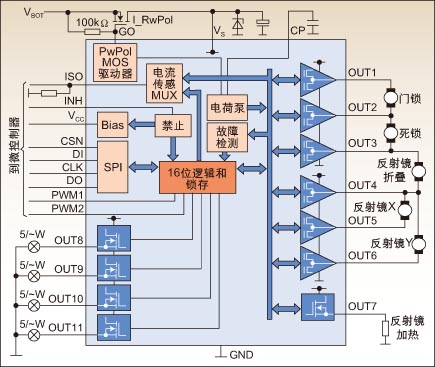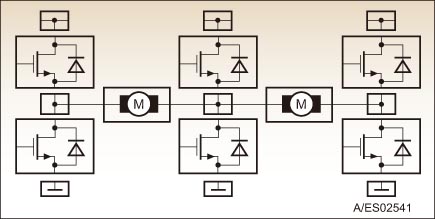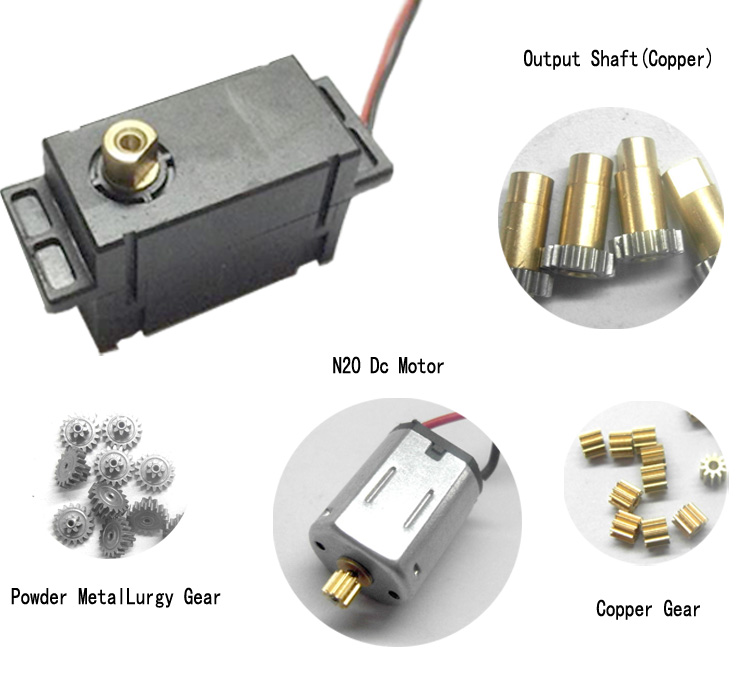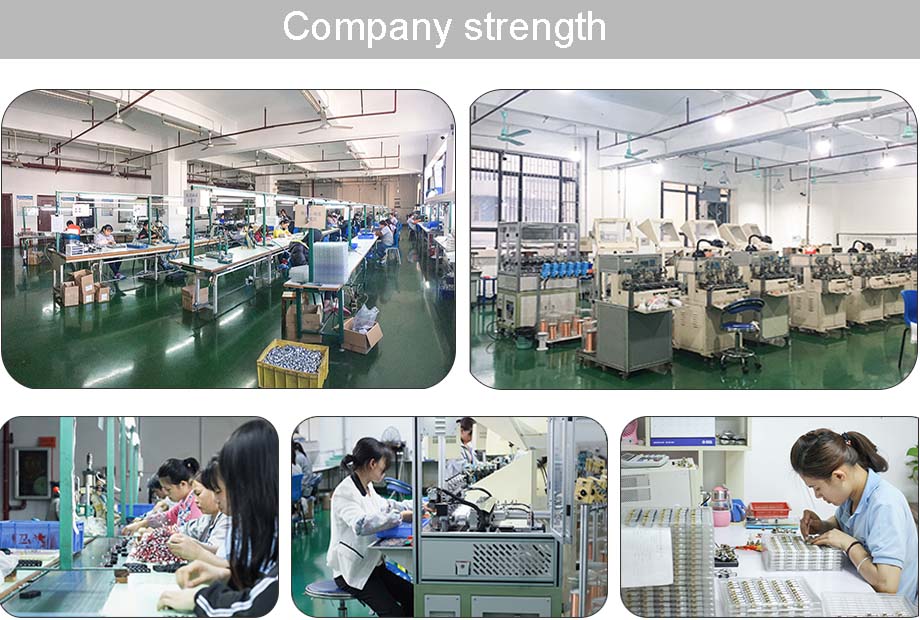With the fierce competition in the automotive market, people are constantly pursuing the comfort and personalization of the car. In the past, many of the functions that only advanced vehicles have, are currently accelerating into mid-range and even low-end vehicles. Most of these functions are associated with body electronics, including automatic door area control, precise dynamic tire pressure monitoring system, personalized intelligent light control system, digital display system, dynamic intelligent small environment air conditioning system and others. Comfortable electronic system, etc. These functions seem to be familiar to many people, but few people may think about what advanced technology is in the future. Fewer people think deeply about the complexity of their technology and the realization of these functions. Restricted. If you think about it, it is not difficult to imagine that any of the above functions will face severe challenges when it comes to low-end and mid-range vehicles.
This article refers to the address: http://
As one of the leading manufacturers of automotive electronics, Infineon offers a range of total solutions to address these challenges. At the just-concluded 2007 Infineon Automotive Body Electronics Solutions Symposium, Infineon provided a good answer for the engineers involved in how to solve these challenges.
Distributed door solutions are more suitable for the Chinese market
In order to achieve the perfect design of the door area, the industry has introduced a variety of solutions. In general, the current door solutions can be divided into three categories:
The first category is the central processing architecture. In this architecture, a powerful central control module is used. All terminal loads (including gating, light control, panels, mirrors, windows, wipers and defrosting) are all directly connected by wires. The fatal shortcoming of this scheme is that the wiring harness is too long, the terminal module is many, the reliability is poor, and the fuel consumption is large. “Although this processing architecture is still the mainstream solution in China and even in the Asian market, considering the above drawbacks, the scheme has been gradually reduced in Europe and the United States, especially in Europe, and has been basically eliminated. Only a few small vehicles remain. Still in use," said Liu Luwei, senior manager of Infineon's automotive, industrial and diversified electronics markets.
The second category is a combination of central and distributed control schemes. In this scheme, each primary load is controlled by an electronic control unit (ECU), and communication between the ECUs and the central processing unit is implemented by LIN and CAN. The advantages of this scheme are light weight, few wire harnesses, high reliability, fuel economy, etc., but the disadvantage is that the cost is too high, and when it comes to the promotion of medium and low-end vehicles, it faces greater cost pressure, so it is only used by some high-end vehicles. (such as BMW and Audi, etc.) adopted.

Figure 1: Block diagram of the Infineon TLE8201 door module.
The third type of control processing architecture is the distributed gate module processing architecture. In this architecture, there is no powerful central processor, but a distributed gate module. This module takes control of all loads in the controlled area. Including the door itself, windows, locks, pedal lights, warning lights and other various signal lights, various mirrors and related panel displays. In this architecture, CAN and LIN buses are used in parallel. CAN is used for complex control transmission of the front door, while LIN is used for simple control transmission such as the rear door. One of the main features of the program is that there is no center, saving the number of bus transceivers between each other. Thereby reducing costs. The functionality and architecture of this approach is currently widely represented. "Based on cost and complexity considerations, the program has become a mainstream solution in Europe, and is also particularly suitable for low-end vehicles in the Asian market, so it is also the main push for Infineon's current Asian market." Qi introduced.
The door module that Infineon supports for this solution is the TLE8200 series. Key features include a full bridge for driving the main Door Lock Motor, multiple half bridges that support deadlock, mirror position, folding and defrosting. There are also a number of high-performance electronic switches that drive large currents, standard SPI interfaces, and more. These switches replace the original relay solution and have been greatly improved in terms of reliability, as well as mechanical noise caused by relay action. In addition, it includes a standard 16-bit SPI and various protection functions, including over-temperature, over-voltage and over-current protection, as well as comprehensive diagnostic functions. In addition, Liu Luwei also introduced: "By adopting this scheme, compared with the first scheme, the average fuel saved by this one alone is as high as 0.2-0.3L/100km."

Figure 2: Schematic of an Infineon half-bridge driver with SPI I/O.
As the bus module in this scheme, the functions are also relatively complete, mainly including central door lock and safety lock control, door light control; rear view mirror X/Y axis adjustment, folding and defrost heating; electric glass lifting and blocking detection; Complete protection and diagnostic functions: reverse battery protection, overvoltage, undervoltage, overtemperature, short circuit protection and related fault status feedback, load current and load open circuit detection; system with sleep and external wake-up function. It is important to minimize the wiring harness and greatly improve reliability.
However, according to some users' opinions, it is not difficult to analyze that as a major automotive electronics semiconductor supplier, although its products have their own advantages, they are similar, and Infineon's product line is relatively comprehensive, which can provide engineers with design solutions. Larger convenience.
Adhere to the direct TPMS program without wavering
How to effectively control the tire puncture in high-speed driving has always been a worldwide problem. According to relevant information, China’s major safety accidents caused by tire problems have exceeded 10%. In order to solve this problem, the industry has developed an active security technology such as TPMS. Nowadays, the importance of TPMS is becoming more and more obvious, and it has become the standard of more and more vehicles.
At present, TPMS is divided into two categories, one is an indirect scheme and the other is a direct scheme.
In the indirect scheme, the original variable collected is not the tire pressure itself, but the intermediate variable, ie the speed of the wheel. It is based on ABS sensor technology. The rotational speed of the wheel is detected, compared with the stored standard value, and then the tire pressure is judged to be normal based on the comparison result. This technology has the advantages of reusable ABS sensor in the car, simple, no battery, and high reliability. However, its shortcomings are also obvious. For example, the accuracy is too low. Only when the undervoltage is high, the ABS sensor will react. In addition, since the car cannot always travel straight, the rotational speed of the wheel is theoretically inconsistent. Many false alarms will be formed, and only for vehicles with ABS. It is precisely because of these shortcomings that more advanced direct TPMS technology has been gradually promoted in developed countries.
Direct TPMS technology, as the name suggests, sensor sensing parameters are the pressure itself. The pressure sensor is implanted directly into each tire, so that the pressure of each tire can be monitored every moment. The wireless transceiver transmits the sensor-sensed data wirelessly to the cab, allowing the owner to dynamically obtain accurate data, whether at high speeds or at slow corners. Of course, the standard range is also set, and when the range is exceeded, an alarm message is generated.
Direct sensors are characterized by direct, accurate, dimensionally unreliable and reliable, which increases the effectiveness of safety technology. But the downside is that it is complex and requires energy for the sensors inside the tire. It is these shortcomings that have affected some users' confidence in this technology.
Infineon uses a direct TPMS solution. The solution includes RF TPMS module SP30, TDK5100 series transmitter, TDA5200 series receiver, RISC microcontroller and three-layer stacked sensor using the company's patented technology. The complete product chain self-contained system has the highest matching, using the ASK/FSK modulation scheme, working in the 350MHz and 450MHz license-free bands. In addition to accurate tire pressure monitoring, it provides accurate temperature and acceleration detection. The pressure range is 100-450 kPa, while the temperature range and acceleration range are -40 to +125 ° C and -12 to 115 g, respectively. The module achieves minimal error with a pressure error of only ±7 kPa under normal conditions. All functions are implemented on a flexible PCB with only 104.5 square millimeters.
Through the above comparison, the characteristics of each of the two schemes have been relatively clear, and there is no intention to make a good or bad conclusion here, and the reader has a reasonable judgment. The company's manager Liu Luwei also showed great confidence in his direct plan. He said: "Indirect performance can't meet the requirements of users, nor can it compare with our products. People often worry about energy problems, but we are currently implanted. The battery life of the tire sensor product has reached ten years. Which tire can last for ten years? In addition, he also said that the application of energy itself has skills, such as a large part of the transceiver in the module. Energy, if the sampling frequency is designed to be more reasonable, the space for saving energy is still large. In this regard, the company has yet to be further guided by the application design engineer.
Electronic Lock Motor product introduction:
Electronic Lock Motor, also known as Intelligent Lock Motor, Belong to small reducer series, the main structure composed of drive motor (motor) with a reduction gear box, composed of a shaft connection, form integrated motor reducer; Drive motor is purchasing product, reduction gear box is customized according to the project product demand, the maximum power under 10 w, maximum voltage up to 12 v, below 25 mm diameter size.
Functions: it is widely used in various intelligent locks, such as Shared bicycle lock, fingerprint lock, glass lock, safe lock, hotel lock, family lock, inductive smart lock, etc
Features:China Electronic Lock Motor is based on micro precision reducer development, small intelligent micro precision reducer can do 10 mm in diameter, is widely used in safe, locks, smart locks, sensor intelligent lock;
This kind of motor has the characteristics of low noise, low energy consumption, small volume, light quality, high precision, large torque and durability
Method of use: the best stable in horizontal plane, installed on the China Electronic Lock Motor output shaft parts, cannot use a hammer to knock, knock prone to press into the dc Electronic Lock Motor drive, may cause damage to internal components, and cannot be used in the case of blocked.

Operating temperature range:
Electronic Lock Motor should be used at a temperature of -10~60℃.
The figures stated in the catalog specifications are based on use at ordinary room temperature catalog specifications re based on use at ordinary room temperature (approximately20~25℃.
If a electronic Lock Motor is used outside the prescribed temperature range,the grease on the gearhead area will become unable to function normally and the motor will become unable to start.Depending on the temperature conditions ,it may be possible to deal with them by changing the grease of the motor's parts.Please feel free to consult with us about this.
Storage temperature range:
China Electronic Lock Motor should be stored ta a temperature of -15~65℃.
In case of storage outside this range,the grease on the gearhead area will become unable to function normally and the motor will become unable to start.
Service life:
The longevity of Electronic Lock Motor is greatly affected by the load conditions , the mode of operation,the environment of use ,etc.Therefore,it is necessary to check the conditions under which the product will actually be used .The following conditions will have a negative effect on longevity.Please consult with us should any of them apply.
â—Use with a load that exceeds the rated torque
â—Frequent starting
â—Momentary reversals of turning direction
â—Impact loads
â—Long-term continuous operation
â—Forced turning using the output shaft
â—Use in which the permitted overhang load or the permitted thrust load is exceeded
â—A pulse drive ,e.g.,a short break,counter electromotive force,PWM control
â—Use of a voltage that is nonstandard as regards the rated voltage
â—Use outside the prescribed temperature or relative-humidity range,or in a special environment.
â—Please consult with us about these or any other conditions of use that may apply,so that we can be sure that you select the most appropriate model.
when it come to volume production,we're a major player as well .each month,we rurn out 600000 units,all of which are compliant with the rohs directive.Have any questions or special needed, please contact us, we have the engineer group and best sales department to service to you
Looking forward to your inquiry. Welcome to our factory.

Electronic Lock Motor
Electronic Lock Motor,Motor For Electronic Lock,Electronic Lock Dc Motor,Electronic Lock High Speed Motor
Shenzhen Shunchang Motor Co., LTD. , https://www.scgearmotor.com
